
Date: 2022-06-13 Visitcount: 97
The online exchange program “Trends and Challenges in Global Education in the Post-Epidemic Era” was held online since May 20, 2022. ‘The program activates the magnets of curiosity, knowledge, and wisdom in the students, to reconsider higher education, discuss new methods, and share latest research findings. All invited keynote speakers demonstrated their insights, providing important enlightenment for educational speculation and research.
Professor Yan Wenfan from the Department of Educational Leadership at the University of Massachusetts Boston, USA, as the opening guest lecturer, delivered a keynote speech on “Rethinking college teaching and learning after COVID-19: Challenge, innovation and reflection from American classroom”. Prof. Yan started by analyzing the rapid development of remote teaching in the context of the epidemic, and proposed that the COVID-19 epidemic has revealed a huge potential of innovation in many education systems, thus to clarify that education innovation is to be the core of almost every education system in the world. With the development and application of technology, various synchronous learning activities in teaching have been enriched: students’ learning environment, learning tools and learning models have undergone great changes. Professor Yan suggested reflecting on university teaching in three aspects, namely, “where we came from, where we are now, and where we want to reach in the future”, and stated his point of view that teaching form emerged during the epidemic still cannot completely replace traditional teaching. During the Q & A session, students asked Professor Yan for further advice on real-life American classroom teaching in relation to their own knowledge of American university classroom teaching.
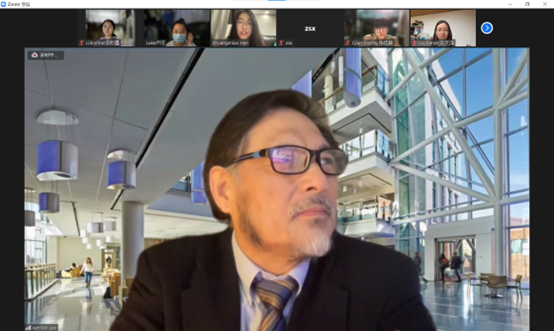
OnMay 22, Associate professor David Mills at the Department of Education from University of Oxford in the UK discussed the trends and challenges beyond COVID-19 in global higher education. He presented that mobility and equity are two big issues that global higher education is currently facing. He compared and analyzed the phenomenon of academic mobility from a historical perspective and argued that the history of higher education is in fact the history of academic mobility. The COVID-19 has also brought to light the mechanisms and phenomena of inequality behind higher education that may have been overlooked. For example, digital campuses have become the central concern of higher education in many countries, but there are inequalities among different students in terms of available access to learning resources and learning opportunities for online participation. Therefore, he suggested that inequalities and hierarchies resulting from international mobility should be reduced, with more collaboration and less competition.
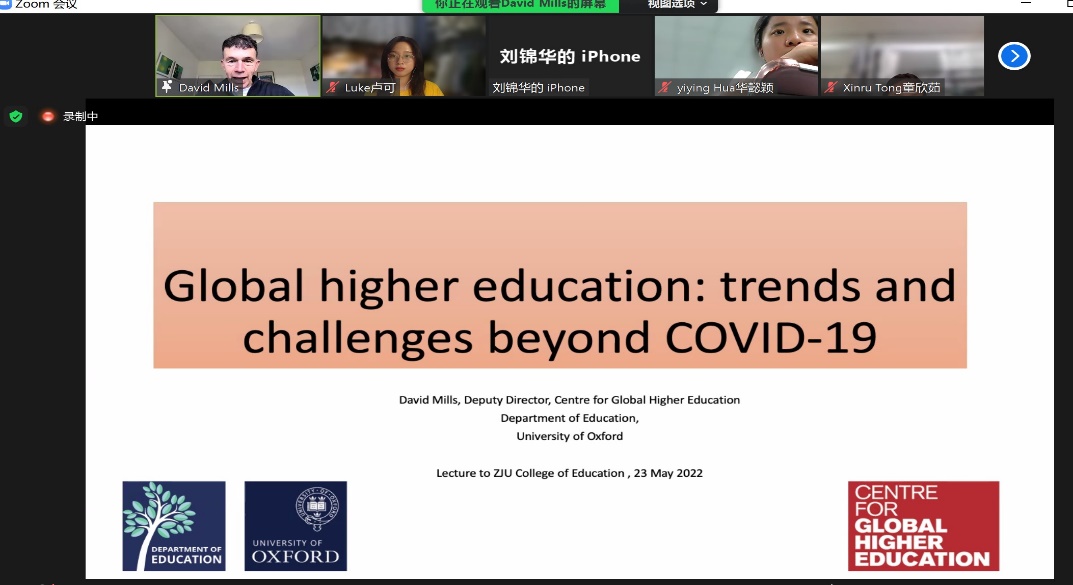
OnMay 27, Professor Yin Hongbiao from the Department of Curriculum and Instruction in Faculty of Education, The Chinese University of Hong Kong, delivered a keynote presentation on “University students’ learning experiences in online and regular environments”. Professor Yin firstly identified student learning as main focus of higher education, then introduced two conceptual tools applied in the studies, namely, course experience and student engagement. Finally, he shared his latest research on the learning experiences of Chinese university students in online and regular environments, by systematically introducing his research thinking, conclusions and implications of the relevant series of completed studies. In the interactive session, students asked questions concerning their own learning experiences in both online and regular environments, Professor Yin patiently gave immediate answers one by one.
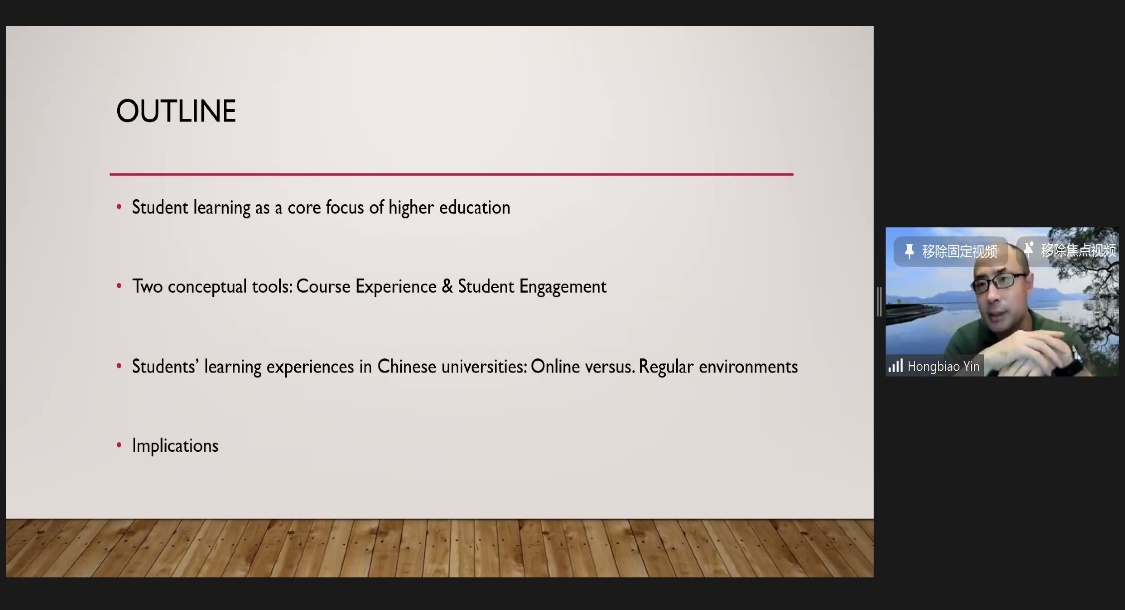
OnMay 29, Professor Li Jun from the University of Western Ontario in Canada gave a lecture on “Educational improvement science in global perspective”. First, Professor Li Jun aimed at setting up students-centered learning environment, by asking participants about what is expected to be gained through the lecture at the beginning. Then, Professor Li Jun introduced five aspects for education improvement in detail: multiple challenges, the definition, discipline framework, global application, and the potential prospect. Then, Professor Li Jun explained explicitly about the origin of EIS, mentioned six elements of EIS, and three major problems encountered, and later he put forward his idea with the case of Procter & Gamble Company.
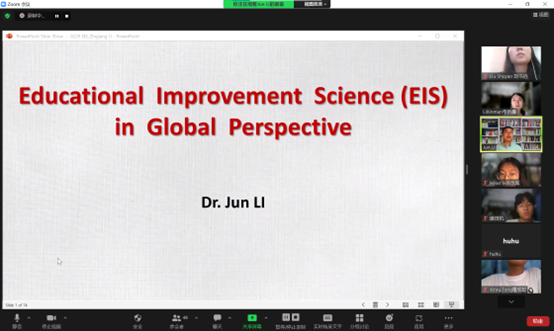
On June 4, Professor Chang Tongshan, Director of Institutional Research and Academic Planning at the University of California (UC) Office of the President, made a theme report on “How undergraduate students at top public research universities in the USA learn”. First of all, the audience was asked to fill out one questionnaire about individual university learning. Then, Professor Chang analyzed the current graduation requirements, major changes, curriculum, on- and off-campus activities participation of foreign top universities. In his speech, Professor Chang claimed one of the most important elements for cultivating excellent college students is to develop core competitiveness in the aspects of students’ thinking, learning, design and so on. Finally, Professor Chang summarized three characteristics of world-class universities, which are providing clear directions for college students, enriching students’ learning opportunities, and allowing students to participate in and organize more activities. After answering all the questions from the students, Mr. Chang emphasized that the epidemic was a test for all of us. In the future, online teaching may be more commonly used, but the uniqueness of offline teaching should be valued, it’s obvious that online teaching cannot better pay attention to students’ instant performance, while offline teaching has the advantage of getting more timely feedback from students.

On June 10, Professor Wang Ting from the University of Canberra, Australia, focused on “Initial teacher education in Australia and classroom ready teachers: A comparative perspective”. To get to know students better, Professor Wang asked the students to introduce themselves previous to the presentation. Professor Wang put her emphasis falling on teacher education. In specific, Professor Wang explained the pre-service education certification for classroom ready teachers, the AITSL vocational assessment agency in Australia, the employment standards of Australian vocational teachers, the key reforms of TEMAG and the teachers and teaching of the University of California. Finally, Professor Wang summarized the characteristics and problems in the current education field , and shared her main idea that teachers are the key to our future. When students asking about whether such a standardized teacher qualification system can be borrowed, Professor Wang said that the standards for recruiting teachers in each school and each region are different. China is learning from the educational mechanisms in Australia and other countries, but we must always keep in mind that each mechanism has its own advantages and disadvantages.
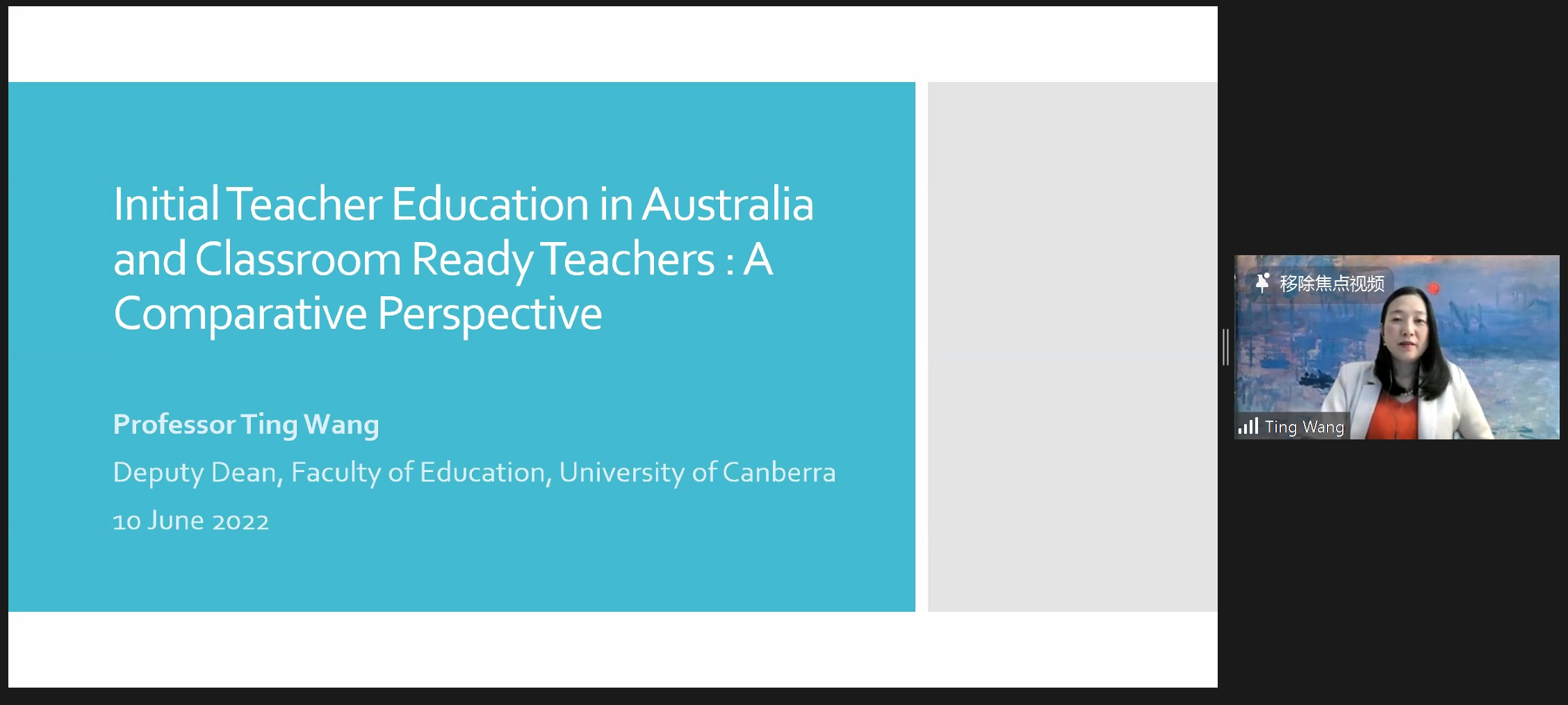
On June 11, Professor Huang Futao of Hiroshima University, Japan, launched into an academic discussion of “Undergraduate education at top overseas universities”. Professor Huang primarily differentiated the first university undergraduate education and the world-class university evaluation criteria, and then from comparative perspective, he demonstrated how to build first-class undergraduate universities, taking the United States and Europe as example. Then, respectively, Professor Huang listed Massachusetts Institute of Technology, University of Cambridge and other world-class university to do the case analysis, so the relevant characteristics of bachelor degree courses in research universities are obtained. In the end, Professor Huang talked about the trend of university curriculum pattern and the characteristics of undergraduate curriculum, as well as the relevant problems and enlightenments included.
Initiated in 2020, College of Education has actively expanded pathways of communicating with other countries and regions annually since the epidemic outbreak, to exchange latest insights, keep close track of academia, explore new research methods, and respond to regulatory changes in the educational sector. Looking forward to further deepened cooperation!
Edited by XIA Jingyan, LU Ke, LIU Tianze, XIE Chunxiao, SHEN Tianhang
Photo taken by LU Ke, LI Xinman

